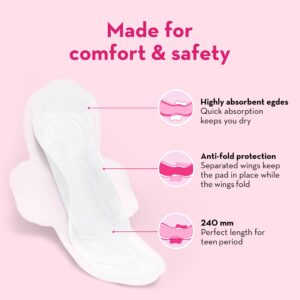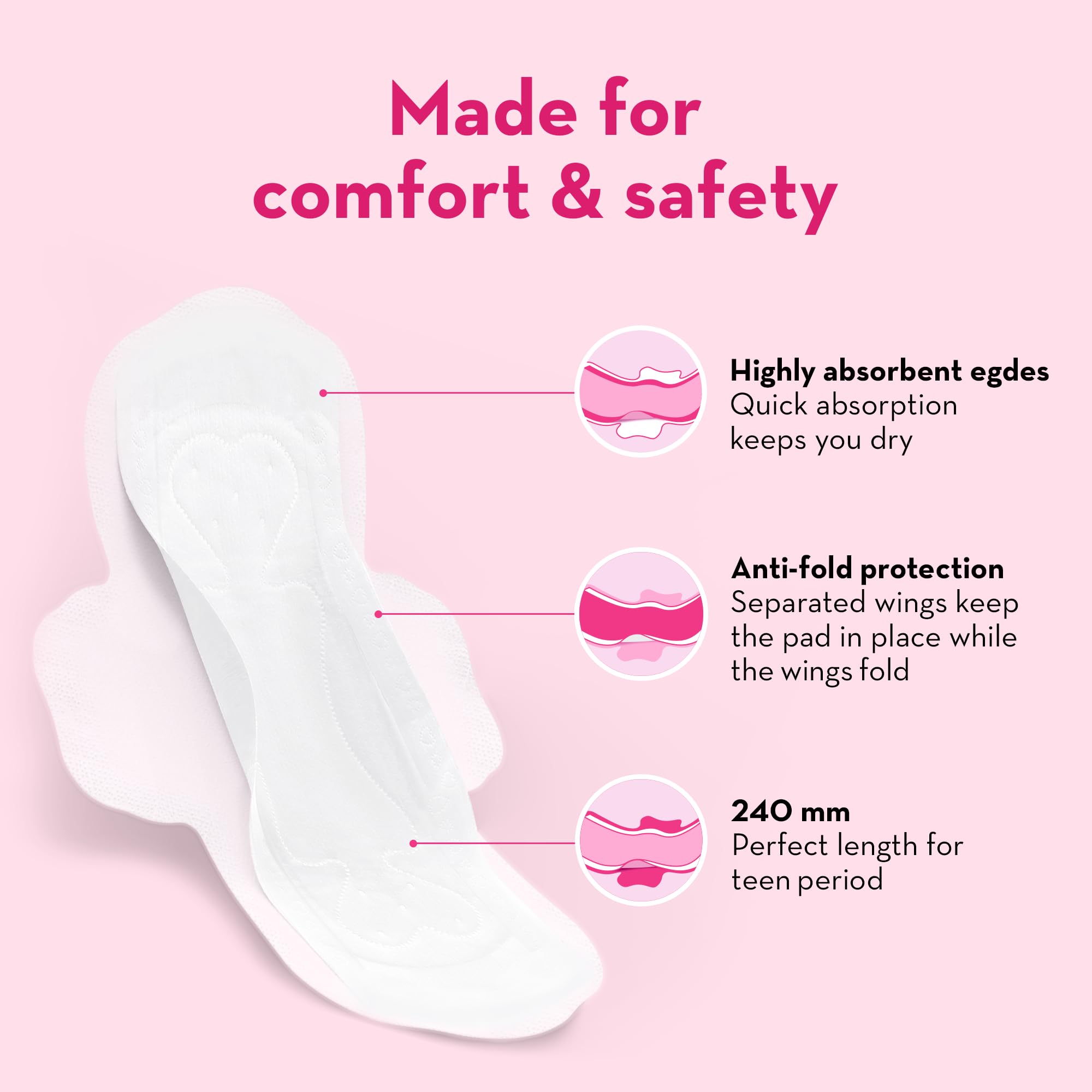Are Pads Safe for Teenagers?

The onset of menstruation may be both thrilling and daunting for many young females. The appropriateness and safety of menstruation products are among the first queries that come up. Teenagers may safely use pads? Yes, sanitary pads are among the safest and most often used solutions for teens’ menstrual hygiene.
This page goes into great detail on the advantages, safety, and appropriate use of pads for teens. We’ll also go over how to pick the best pad and offer helpful advice for new users.
Why Are Teenage Pads Safe?
External menstruation items called sanitary pads, often referred to as menstrual or sanitary napkins, are made to absorb menstrual blood. For a number of reasons, they are generally regarded as safe for teens.
1. Usability
Because pads are easy to use and don’t need to be inserted, they’re a great option for teens who might be uncomfortable using internal goods like menstrual cups or tampons.
2. Non-intrusive
Pads are a pleasant and non-threatening alternative for teenagers since they are worn externally, do not interfere with the body, and do not need an understanding of internal anatomy.
3. Broad Access
There is a pad to meet the needs of any kid because they come in a range of sizes, absorbency levels, and designs.
4. Toxic Shock Syndrome (TSS)
The risk of Toxic Shock Syndrome (TSS), an uncommon but dangerous bacterial infection linked to extended tampon use, is not present with pads, in contrast to tampons.
5. Materials That Are Kind to the Skin
A lot of pads are composed of hypoallergenic, soft fabrics that are intended to reduce discomfort and increase comfort. Teens who want goods devoid of artificial chemicals or scents can also select organic pads.
Advantages of Teenage Pad Use
Teenagers frequently use sanitary pads because of their many benefits:
1. Convenience and Comfort
Wearing pads is pleasant, and changing them takes little work. Teens may quickly access them by carrying them in their school backpack or pocketbook.
2. A Range of Choices
Pads are available in many thicknesses and sizes, including:
Thin pant liners: For everyday freshness or faint spotting.
Light to moderate flow is best served by regular pads.
Heavy Flow Pads: Made for prolonged use.
Pads for the night: Offer prolonged protection while you sleep.
Teens may tailor their menstruation care to meet their own needs thanks to this diversity.
3. Protection Against Leaks
Excellent leak protection is provided by pads with wings and high-absorbency cores, giving teens confidence whether participating in social events, sports, or school.
4. Beginners’ Accessibility
Because pads don’t require the same expertise or practice as tampons or menstrual cups, they are simple for novices to use.
How to Pick the Proper Pad for Teens
Selecting the appropriate pad may have a big impact on both comfort and performance. Here’s how to choose the best choice:
1. Level of Flow
Use standard pads or panty liners for mild flow.
Use standard or medium-absorbency pads for moderate flow.
Choose overnight or long, thick pads for strong flow.
2. Dimensions and Length
Teens with smaller frames could like shorter or smaller pads.
Long or wings pads are an excellent option for additional protection, particularly at night.
3. Material To prevent irritation, look for pads composed of supple, breathable fabrics. Teenagers with sensitive skin might benefit from using organic cotton pads.
4. Strength of Adhesion
To hold the pad in place when jogging or dancing, make sure it contains sturdy adhesive strips.
How Pads Are Used: A Comprehensive Guide for Teens
Here is a quick instruction for teens who are using pads for the first time:
Wash your hands first.
To stop the transmission of germs, wash your hands well with soap and water before touching a pad.
Step 2: Take off the pad.
Take the pad out of the box. For hygienic reasons, the majority of pads are individually wrapped.
Step 3: Remove the Backing: Position the sticky side of the pad in the middle of your underwear after removing the sticky backing.
Step 4: If necessary, secure the wings.
To hold the pad firmly in place, tuck any wings over the edges of your underpants.
Step 5: Get Rid of Old Pads
After using the pad, place it in the appropriate trash and wrap it in its wrapper or toilet paper. Pads should never be flushed into the toilet.
Step 6: Modification Frequently
Replace your pad every four to six hours, or sooner if it gets wet.
Resolving Teenage Pad-Related Concerns
First concern: Rashes or skin irritation
Although pads are usually safe, using the same pad for extended periods of time might irritate it. To stay clear of this:
Regularly replace your pad.
Select pads made of skin-friendly, breathable fabrics.
Second Concern: Leakage
If the pad isn’t the proper size or isn’t replaced often enough, leakage may happen. For improved protection, use overnight or high-absorbency pads.
Issue 3: Effects on the Environment
Some teenagers might be concerned about the disposable pads’ impact on the environment. Reusable alternatives are worth looking into, such as cotton pads or period underwear.
Advice for Teens Who Use Pads
Keep Extras Close at Hand: To facilitate cleanup, always include an extra pad or two in your backpack along with tissues or wipes.
Put on cozy underwear: Select underwear that fits snugly to ensure the pad stays in place.
Practice at Home: To build confidence if you’re new to using pads, try wearing and changing them at home.
Monitor Your Period: To estimate when your period will begin and make plans appropriately, use a calendar or period-tracking software.
Do Teens Have Any Other Options Besides Pads?
Although pads are the most popular option among teens, there are other safe and efficient menstruation items as well:
1. The tampon
Teens who feel comfortable using internal goods can use tampons. Although they offer covert protection, they must be inserted correctly.
2. Cups for menstruation
Menstrual cups are environmentally friendly and reusable. Teens can require considerable practice before they can utilize them with assurance.
3. Underwear for periods
For light to moderate flow, period underwear is a great choice. It can be worn as backup protection or on its own.
4. Reusable Cloth Pads
Cloth pads are a sustainable option since they are washable and reusable, just like disposable pads.
Q1: Are pads safe for daily use?
Q2: How many pads should a teenager use in a day?
Q3: Can teenagers wear pads overnight?
Q4: Are scented pads safe for teenagers?

